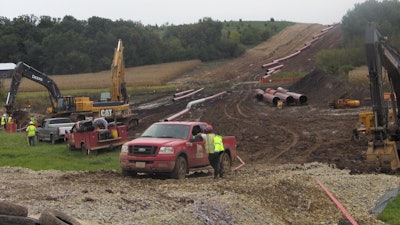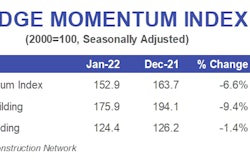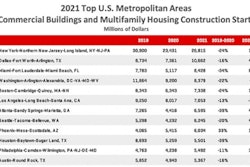
The latest issue of the Civil Quarterly (TCQ) reveals that civil contractors are more optimistic about the construction economy in their sector in 2022. However, the study also shows that worker shortages will have a major impact on construction and civil contractors going forward.
The Civil Quarterly from Dodge Construction Network provides a quarterly snapshot of the current business health of civil contractors and engineers conducted in November 2021. It is produced in partnership with Infotech, Hexagon, Command Alkon and Digital Construction Workers.
Report findings show that nearly three-quarters (73%) of civil contractors are highly confident about finding work in 2022, and around half expect their businesses to experience revenue and profit margin increases in 2022.
However, the report also reveals an increasing concern about the skilled worker. Nearly three-quarters (72%) of civil contractors expect a high degree of difficulty in finding skilled workers, a dramatic increase over the 58% who reported that concern one year ago. Even more strikingly, 89% believe that the cost of workers will increase in the first half of 2022 — far more than those reporting that one year ago (66%).
These labor issues will have major impacts on the sector:
- 54% of civil contractors report that the difficulty in finding workers is impacting their ability to meet project schedule requirements
- 53% report that the increased cost of those workers makes it difficult for them to meet budgets on their projects
As workloads increase in wake of the Infrastructure Investment and Jobs Act, these findings clearly demonstrate that some projects may take longer and be done at a premium price due to the growing concern about worker shortages.
The study also captured contractors' insights into worker recruitment and retention:
Most contractors believe that good benefits and a reputation for high pay are the best ways to recruit workers, with a greater emphasis on high pay to help recruit workers under 30 years of age.
Respondents also believe the best way to increase the skilled labor force is to increase enrollment in technical high schools/vocational training.
The study shows there is no consistent way in which civil contractors recruit workers, but the top three means used are traditional advertisements, working with industry organizations and working with local trade unions. Of these, the most effective is working with local trade unions.
Sustainability Still Emerging
In addition to examining business conditions and worker recruitment, the study looked at sustainability in the sector. The data shows that green construction is still an emerging practice for civil contractors.
Only 25% report that they have used a green standard or rating system on their projects in the last five years. The most common green practices employed on civil projects currently include green stormwater and waste management and local material/product procurement, which are each used by more than one third of the contractors.
Currently, the findings suggest that civil engineers are more engaged with sustainability than civil contractors. Nearly one third of civil engineers (31%) have used a green standard or rating system for their projects in the last five years.
Over 40% of civil engineers use their top three green practices — green stormwater management, lifecycle cost analysis and creating a construction environmental management plan — and many do so without these practices being mandated by the project owners. In addition, over half (55%) of civil engineers believe that demonstrating that they can build sustainably gives them a competitive advantage, far more than contractors (29%).


















